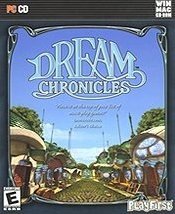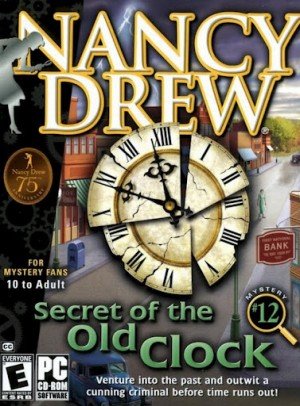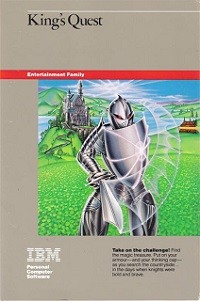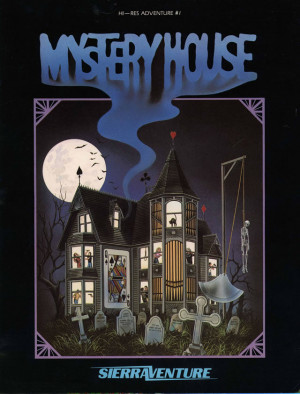Review for Dream Chronicles

Once upon a time, in a magical land not unlike our own, a little game called Dream Chronicles was born. Small but beautiful, it displayed a bold, adventurous spirit that defied its limited stature, and seemed destined for great things. It was a unique new type of crossbreed – part casual, part traditional – that went on to quickly spawn two offspring of the same ilk. To their admirers, this trio came to represent the best of both worlds, with lovely visuals and streamlined, relaxing gameplay that far exceeds simple “seek-and-find” titles in scope and ambition. Their detractors, however, would argue that these games also display the weaknesses of each forebear, stripped down and yet still surprisingly inaccessible and overly obtuse at times.
All of this is true. This is no fairy tale, after all, though a fairy tale is exactly what the Dream Chronicles are all about. Before the likes of Return to Ravenhearst and Drawn: The Painted Tower came along to help popularize the “lite” adventure, KatGames’ series was already blazing the trail. And like many pioneers, there are both inspiring breakthroughs and discouraging setbacks experienced along the way. Since the variations between titles are largely superficial, I’ll take a page out of the “casual” notebook myself, covering all three in one fell swoop, stopping only long enough to highlight the significant differences in each.
Unlike many of its contemporaries, Dream Chronicles is a series that seems to have been inspired by full-fledged adventures and scaled back to its current form, as opposed to the latest trend of adding adventure elements to simplistic designs to make them feel a bit more inclusive. Perhaps that distinction is too subtle to matter (and perhaps I dreamed it up entirely, in keeping with the subject matter), but the point is that in approaching this series, one mustn’t take for granted anything we’ve come to expect of casual games overall. Yes, you’ll spend plenty of time collecting scattered items, but no, it isn’t a “hidden object” game. Yes, the journey is often compact and linear, but there’s far more exploration than you might expect, at least in the later games. And yes, each game does have a built-in hint system, but heck no, it never lets you bypass, auto-solve, or otherwise sleepwalk through their many levels. The Dream Chronicles are games you’ll need to work your way through.
That probably sounds encouraging to puzzle fans and challenge-lovers. And indeed, there are certainly moments to admire from that perspective. On the other hand, make no mistake: the three Dream Chronicles are distinctly casual experiences that rarely reach for or achieve much beyond the minimum levels of personal freedom, puzzle relevance, or narrative depth to tie it all together. And unfortunately, a bit too much of the difficulty stems from the same problems that have plagued adventure games for years, most notably the dreaded pixel hunt and a reliance on ridiculous contrivances serving as obstacles. So while working your way through a game can be mentally stimulating, sometimes it’s inevitably bound to feel far more like work than fun. Such is occasionally the case here.
The setup for each game is virtually identical. A point-and-click slideshow adventure played entirely in first-person view, you’ll control a mortal woman named Faye, who’s pitted against the machinations of Lilith, the Fairy Queen of Dreams. For reasons that broaden only mildly over the course of the first three games, Lilith has designs on your fairy husband Fidget and your young daughter Lyra, and the goal of each game is to rescue one or both from Lilith’s clutches by following a (figurative) trail of magical breadcrumbs. It’s a very, very thin storyline that stretches just far enough to launch you on your way and occasionally propel you forward with periodic updates.
Faye displays very little personality in the text-only descriptions and reactions provided, and you’ll only ever meet one other character per game (two of which are plants, like miniaturized “Audrey II’s”), making the Dream Chronicles a very solitary experience – your experience. I’ve head the term “Myst-lite” in reference to this series, and that’s not an entirely inaccurate comparison, though the many significant differences soon become apparent. (And let’s face it, isn’t “Myst-lite” an oxymoron?)
Over the course of roughly twenty screens per game, players must solve a series of mainly self-contained challenges. That “mainly” becomes less true in the sequels, which offer a certain amount of openness through central hubs that branch in different directions, though it’s still usually clear where you need to go next and what you’ll need to get there, so don’t expect a lot of extra legwork. Just about every location includes at least one task of item collection, plus another minigame or puzzle to solve. The former is probably where the “hidden object” label comes from, but don’t confuse this series with the “find a random list of items in junk-filled rooms” games. Here the objects are always fully justified by the activity before you, and the environments are never unduly cluttered. So you’ll frequently find yourself collecting such things as machine parts, floor tiles, or wooden planks, stored in your inventory for imminent use. You’ll also collect scattered “jewel” pieces (that look merely like shiny marbles) everywhere you go, which have varying degrees of importance in each game, but at the very least provide something else to occupy your attention.
Unfortunately, along with this very adventure-like inventory search comes an equally adventure-like bugaboo. Pixel hunts are a very real and common problem in the Dream Chronicles. While objects in standard seek-and-find games are really in plain view but camouflaged somehow, here they can be simply hard to see. Sometimes impossible to find, at least without some random clicking. The first culprit here is some object placement to begin with. The items themselves can be very small (keys, chalk, tiny stones), and some items are blatantly hidden or outright concealed behind other things. A needed object might be inexplicably “found” inside a pot (requiring you to click on every pot to find out), or notes will be tucked invisibly inside random books on a full bookshelf, etc. One hotspot is located in pitch darkness, and at another point you’ll need to find multiple spots of “loose earth” that look exactly like all the rest of the dirt. This is bad form in any case, but here it isn’t alone.
While far more of a conceptual complaint than a practical one, each game also uses the same cheap tactic of removing key items right before your eyes. Invariably, you’ll arrive at a new location only to see the very equipment you need suddenly become dismantled, its parts scattered on that same screen and beyond. It’s all passed off under the guise of Lilith’s carefully planned mischief, but it’s too blatant, too excessive to carry the gimmick. Your character dismisses them with reactions like “It’s as if some kind of strange magic is at work.” or “It’s like someone wants to make sure I can’t…” You’re right, Faye, it’s the developers. A Fairy Queen would surely be a little more thorough. The same ploy is used for your benefit on occasion, but it still feels totally artificial. Items that help you can pop up out of nowhere, and often your next instruction will simply appear onscreen unbidden, causing Faye to exclaim such things as “It’s almost as if Fidget were beside me.” Yeah. “Almost”. But more like the game simply couldn’t work the feedback in naturally.
The final accomplice in this annoyance is the surprisingly unhelpful interface. Where most casual games bend over backwards to be user-friendly, the Dream Chronicles don’t even do as much as regular adventure games. There is no cursor change when passing over interactive items, just a text label and a whoosh-like sound effect. That sounds sufficient, but both are extremely slow in responding. You can easily miss objects in a standard cursor sweep simply because you’re moving too fast for the slowpoke interface to keep up. Equally disappointing is the lack of hotspot highlighter to indicate remaining items, replaced here by an intermittent twinkle of interactive hotspots. Again that seems fine in theory, but fails in practice. The twinkles are few and far between, and simply sitting and staring at a screen for minutes on end hoping a tiny spot might gleam momentarily just might be the definition of boredom. And even when it does, it could very well be indicating a hotspot you’ve already dealt with. Replace boredom with frustration here.
While this might sound like nitpicking the (ahem) little problems, it really mars what is otherwise quite an enjoyable experience for the most part. Puzzles and minigames range from game to game, but between them there are many inventory collections to assemble, plus a nice variety of thematic sequencing puzzles, the odd weight or math challenge, some very manageable tile puzzles, and complex riddles to solve. There are other old standbys as well, plus a few mazes to trip up the directionally-challenged, and some colour puzzles that may give others some trouble. The worst offender, however, is what starts to feel like an endless stream of “Simon” minigames, some of which can be quite challenging, with over 15 symbols playing very quickly. Those are fun… once. Each game has some notable examples of quality puzzles, but I’ll get into specifics momentarily.
When not straining your eyes to make out that vague beige thing that looks like nothing in a swatch of long grass, the Dream Chronicles are graphically very pleasing to look at. The artwork is done with a nice fairy tale sensibility, grounded in real-world conditions but taking us places like a spacious treehouse, a nexus center, a tower gondola, and an underwater retreat with its submerged ocean windows. There are also plenty of recognizable environs like scenic gardens, libraries, and bedrooms, all with a slight hint of fantasy. There are no cinematic cutscenes to speak of, and most game screens are static, though there is an occasional ambient animation, from clouds rolling to leaves blowing to a thundering waterfall in the background. And water is something these games do exceptionally well, as you’ll probably want to take a dip in the gently rippling pools and lakes you encounter. Technically, each new game in the series shows a marked improvement over its predecessor, as you’d expect, though the same general aesthetic still remains. Aurally the games are far less accomplished, with no voice acting, limited sound effects, and pleasant but occasionally repetitive and overdone orchestral arrangements accompanying the adventure.
So how does each game fare on its own merits? Let’s break down the specifics.
Dream Chronicles
You had to know this game would be the first of multiple parts when its very title uses a plural. But back in 2007, it was the first and only one of its kind. It’s easily the shortest and simplest of the three, but it clearly sets the template on which its sequels were firmly based. The game does open up slightly towards the end, but most of the journey features a distinct “escape the room” approach. Progress is limited strictly to one screen at a time, and your ultimate goal in each is opening or finding or unlocking the exit, though often through highly unusual means. Longtime adventure gamers may find this unnecessarily stifling, but it’s probably the best starting point for those less experienced in the genre.
Along with (what soon becomes) the usual assortment of inventory puzzles, like repairing bridges or broken statues, Dream Chronicles features several self-contained logic puzzles, a few pattern identification challenges, and several hefty “theme” sequences to complete. Oh, and did I mention the Simon minigames? Brace yourself for some piano lessons, Simon-style (no music skill required). There is also a nice weight-balancing puzzle to solve, though it does highlight one particular irritation. For some reason, your inventory is limited in size, and several late tasks inundate you with far more objects than you can hold. This demands an unnecessarily cumbersome process of shifting items in and out until you figure out which you need where. It really doesn’t add to the difficulty, only the hassle, which is definitely not an even exchange.
Most of the story (in the form of background details) is conveyed exclusively through the journal you find early on. The same is true for your goals, and often I found myself consulting it just to see what my initial aim of a given room was supposed to be. At least some of this certainly could have been integrated into the actual game events. The one character you meet opens up a dialogue tree with a variety of choices, which is admirable. Unfortunately, all but one answer per round are “wrong” and those simply result in ending the discussion entirely. You might want to check out some of the optional lines anyway, but it gets old in a hurry. It doesn’t drag out, however, as he’s present in only one scene, and then you’re back on your way.
The scattered “dream jewels” in this game are for bragging rights only. There’s no running score or any real motivation to collect them all besides the fact that they’re there, and they’ll twinkle at you incessantly when you’re really looking for something useful. You do get a ranking at game’s end, though there’s no way to tell if your achievement is good or not, which makes the point rather moot. The game also has the cringe-worthy habit of giving you a pop-up message each time you find a jewel, reminding you for the umpteen-hundredth time what it is you’ve discovered. I’m pretty sure most people will get it the first time.
There are no timed elements in the game, so it’s a gentle, relaxed experience throughout. All told, it took me less than three hours to get through Dream Chronicles, but a part of that was devoted to the frustrating pixel hunts that characterize the series. Between those, the less-than-optimal interface issues, and the obviously artificial design of the gameplay, I can’t say I was enamoured of the series-to-be in its debut. But I did enjoy the rustic, dreamy locations and lovely artwork, and I could certainly see the potential for better things to come.
Dream Chronicles 2: The Eternal Maze
(score and summary available separately)The good news about the first Dream Chronicles sequel is that some of its predecessor’s promise is indeed reached. The bad news is, not only has some of it not, but several of the same problems that plagued the first game are carried over intact. Thought you’d seen the last of the sluggish interface and pixel hunting? Think again. And if you hoped to see a better integrated story element, you won’t find it here.
What you will find is another stylishly-designed casual adventure, however. The already pretty graphics are even crisper in displaying new scenes from the fairy world of “The Ancients”, and this time there’s more opportunity to explore them freely. Dream Chronicles 2 is still fairly linear, but on several occasions you’ll reach a hub screen that branches off in several directions. At first you often can’t access them all, but you will eventually find yourself moving in between them to complete all your tasks. One of the main objectives is to create your own templates and stone symbols to facilitate this travel, which is a nicely enhanced challenge over simply finding everything you need. Your actions are ultimately the same (rebuild broken machines, find parts, take new part to use elsewhere), but the added layer of complexity makes it feel more like you’re working out problems on your own.
Other activities aren’t much different from the first game, but this time you’ll encounter several tile puzzles, a few jigsaws, one trial-and-error waste of time, some electrical circuit challenges, plus more colours and themes to match, all of which are fairly easy. Oh, and did I mention the Simon minigames? There are a few clever additions, however. One puzzle has you playing records (remember those?) to match sounds with their symbols, though finding each can be a challenge. The sequel does nothing to alleviate the pixel hunting issues of the first game, so once again you’ll find yourself stuck hunting tiny little corners (if that) of unrecognizable objects from time to time. Ugh.
The jewels are back as well, and while they’ve lost their hue and ditched their pop-up messages this time, they’ve gained some relevance instead. By finding both the loose jewels and their ornate settings, you can “meditate” on these completed mystical artifacts, which really consists of forming full sentences from scattered words. There’s no feedback to help you out, but these word games are all quite manageable with a little experimentation, and it’s a nice inclusion that gets repeated a handful of times. Completing them isn’t necessary, but may yield some helpful clues for puzzles later on.
Of course, you’d expect a game called The Eternal Maze to include some mazes, and there are indeed two here, though thankfully they aren’t anything close to eternal. They’re quite small and simple, in fact, the only marginal difficulty coming from having to backtrack through them to find additional objects you don’t know are there at first. Still, they’re so confined that even the most ardent maze-haters will pass through largely unscathed.
If you’re considering picking the series up here, there’s no reason you can’t. The story is ostensibly a continuation of the first game, but it’s every bit as thin here, and there’s so little to actually follow that you’ll quickly get the gist. You’ll meet a new character, who happens to look a whole like the first one (I apologize to plants for the racial generalizing), but once again he’s really just a fringe element to mix things up. Like the first game, the “ending” is really just a setup for yet another sequel, but it’s unlikely that you’ll be drawn to future games for plot reasons. What might encourage you is the slight improvement of Dream Chronicles 2 over the original, with better graphics, a few nice puzzle additions, and a more open-ended design that makes you feel more like a participant than a passenger, adding maybe an hour to the total game time in the process. There’s still a way to go to clear up the annoyances, however, so at this point players will be hoping that third time’s a charm...
Dream Chronicles: The Chosen Child
(score and summary available separately)The third game in the presumably-ongoing Dream Chronicles series (if dropping the numeral from the title wasn’t enough of a clue, its brazen “to be continued” finale certainly will be) is perhaps less suited to a “better” or “worse” description than simply saying “more”. Bigger, longer, and more difficult than its predecessors, it displays both more of what players might like about the first two games… and more of what they won’t.
You know the drill by now. The storyline is once again paper thin – despite its attempt to throw a twist in this time, which changes nothing whatsoever – and pretty much nothing about the basic objectives, game mechanics, or interface has changed this time around. Unresponsive cursor? Yup. More scattered jewel pieces amidst beautiful scenery, other concealed items, and standalone puzzles? You betcha. Still looking for hubby and kid? Check-a-roonie.
For now, let’s stick with the (flawed, as you’ll soon see) “more is better” theory. In The Chosen Child, the visuals are snazzier than ever, with even more animations and some genuinely impressive effects, like a cracking fire ring or an automated old-fashioned sewing machine (where can I get one of those?). There still isn’t a peep of voice acting, which really should have been managed by now, and the music, while pleasant as always, can actually be intrusive this time, playing as it does over some sound-based puzzles. Still, from a production quality standpoint, Dream Chronicles continues to sit at the front of the casual class.
This game is even more open than the last one, once again featuring a central hub area, but this time branching off into much wider directions that occasionally intertwine. The action is all still fairly directed, but you will do more to-ing and fro-ing, which at least gives the illusion of being in a more fully-integrated game world. You’ll even make a return to trip to your original home from the first game, which both looks much nicer and provides a welcome moment of (recent) nostalgia. Unfortunately, the ridiculous pixel hunting returns as well, still with nothing at all done to minimize the possible frustration. My first time through, I actually needed to consult a walkthrough for one tiny part, and on replay, I got stuck at a different area for another hidden piece. Either my eyesight suddenly got worse, or that’s just how annoyingly inconspicuous some of the objects are. My money is on the latter.
Along with the by-now-standard gameplay formula of collecting, building and repairing inventory obstacles, you’ll engage in other puzzles like planetary alignment, tile and valve rotation, a toy-based riddle, and more pattern recognition. Oh, and did I mention the Simon minigames? (If you think reading that same sentence is repetitive, that’s an inkling of how obnoxious they start to feel three games into the Dream Chronicles.) And remember how I said players got off easy with the mazes in game two? Kiss your luck goodbye, as The Chosen Child has several lengthy mazes you’ll need to traverse multiple times. It’s all done in a slick-moving 3D this time (just the mazes, not the rest of the game), but that doesn’t make them any more interesting.
Fortunately, there are once again a few nice gameplay additions. You’ll finally get to concoct some potions of your own (it just doesn’t feel like a fantasy unless you’re making some magic), but only after deciphering recipes by unscrambling words, which always feels fair and fun. There is also a constellation pattern-overlay puzzle that can be quite challenging… each and every single time you’re forced back to do it again (I lost count at seven). Clearly, more isn’t starting to equal better anymore.
Another good puzzle is the new use for the still-scattered jewel pieces. This time they’re actually necessary, as different sets of three are needed to create mixed-and-matched primary colour codes to access new areas. You even get to make your own jewel settings with gold you collect, though a really obvious puzzle opportunity was missed by neglecting to let players choose the jewel placement themselves. Still, it’s a creative adjustment that finally implements what was largely just a throwaway element previously. Mind you, now you collect far more gold pieces than you’ll ever need, somewhat replacing the irrelevant item function. Oh well.
New to the series is a crystal ball, which is supposed to serve as a puzzle hint function. Not a hotpot highlighter (the ever-ineffective twinkle is still around for that), but a source of actual clues. In practice, however, I found this feature all but useless, as not a single hint ever really helped, being too general to be of use. You can keep clicking, but soon enough you’ll hit upon a stock “I wish I could help you more.” Me too, ball. Me too. In effect, then, its presence is really more to help define your goals than provide any tangible hints.
The sum total of the good and bad changes from previous games probably doesn’t make The Chosen Child the worst game of the series, but it’s perhaps the most disappointing. The novelty that carried the first game is long gone, and the problems still remaining after three tries are all the more exasperating for their continuation. Clocking in at over four hours of game time, it’s certainly more, but for “better” we’ll need to keep looking ahead for future Dream Chronicles still to come.

































